The best way to prevent potholes from occurring is to repair cracks, before inclement weather sets in.
If you have any vegetation in the cracks or potholes it must be thoroughly killed before attempting a crack or pothole repair, failure to do so, and you will have the vegetation reappearing. This may require numerous applications of a heavy duty vegetation kill. Make sure that the product you purchase is not petroleum based as this will have a detrimental effect on the crack and pothole fillers.
Cracks, that are basically stable, that are 1/2 inch wide or less can be filled with an elastic crack filler (Figure 9). Remove dirt and pieces of asphalt from the crack using a pressure washer (Figure 10). Make sure that the sides of the asphalt are not covered in dirt and mud, caused by the pressure washer, as the elastic crack fillers will not adhere to dirt and mud or other debris.
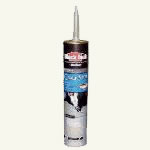
Figure 9 - Elastic crack filler

Figure 10 - Pressure washer
Apply the elastic crack filler using a caulking gun (Figure 11), as shown in Figure 12a.
Allow the crack filler to set before walking or driving a vehicle over the repair. Follow the manufacturer's instructions, especially with respect to application temperatures.
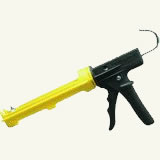
Figure 11 - Caulking gun
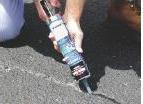
Figure 12a - Filling crack in asphalt driveway
For cracks that are wider than 1/2 inch but smaller than 1 inch, or are continually contracting and expanding you should use an elastomeric crack filler that can be poured into the crack, as shown in Figure 12.
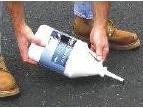
Figure 12 - Using an elastomeric asphalt crack filler
Clean out the crack in the same manner as described for cracks that are smaller than 1/2 inch and follow the manufacturer's instructions.
If you have cracks that are larger than 1 inch, a surface that needs repair or potholes that are less than 1 inch deep they can be repaired using a repair product that contains butyl rubber. This type of product should be applied using a small hand trowel, as shown in Figure 13. Remove any loose pieces of asphalt or other debris from the hole or from on top of the surface using a pressure washer (Figure 10).
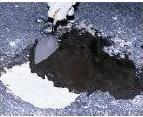
Figure 13 - Small hole asphalt repair
For potholes that are deeper than 1 inch you need to use a product that has the same contraction and expansion characteristics as the asphalt. Most individuals are not prepared to use hot asphalt as a repair material, so manufactures have produced products that react and look the same as hot asphalt but are installed cold.
Remove any debris from the hole. Make sure that the foundation layer is packed, especially around the edges of the hole. This can be done with a tamper or a 2 X 4 or 4 X 4. Lay the cold asphalt in the hole, no deeper than 1 inch, tamp this material tight, then pour out another layer 1 inch thick and tamp it into position, repeat the process until the hole is filled and tamped down (Figure 14).
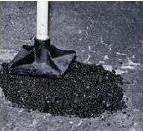
Figure 14 - Cold asphalt being tamped into position
Follow the cold asphalt manufacturer's instructions for exact installation instructions and how long to wait before sealing the repaired pothole.
